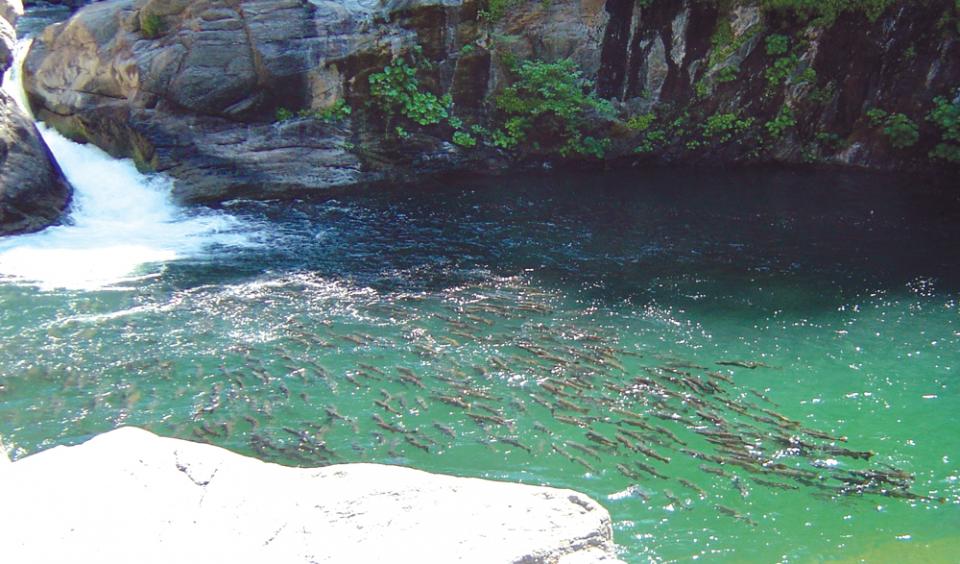Butte Creek
 Butte Creek, a tributary of the
Sacramento River, begins less than 50 miles northeast of Chico,
California and is named after nearby volcanic plateaus or
“buttes.” The cold, clear waters of the 93-mile creek sustain the
largest naturally spawning wild population of spring-run
chinook salmon in the Central Valley.
Several other native fish species are found in Butte Creek,
including Pacific lamprey and Sacramento pikeminnow. As a
watershed, it drains about 800 square miles, both for
agricultural and residential use. The upper watershed is
dominated by forests, while the lower watershed is primarily
agricultural.
Butte Creek, a tributary of the
Sacramento River, begins less than 50 miles northeast of Chico,
California and is named after nearby volcanic plateaus or
“buttes.” The cold, clear waters of the 93-mile creek sustain the
largest naturally spawning wild population of spring-run
chinook salmon in the Central Valley.
Several other native fish species are found in Butte Creek,
including Pacific lamprey and Sacramento pikeminnow. As a
watershed, it drains about 800 square miles, both for
agricultural and residential use. The upper watershed is
dominated by forests, while the lower watershed is primarily
agricultural.
The watershed drains about 800 square miles across the counties of Butte, Tehama, Sutter, Glenn and Colusa. The creek begins at around 7,000 feet of elevation and winds through forests, steep canyons and multiple hydroelectric dams before reaching the valley floor, where its water is used for agricultural and municipal purposes. Fishing, hiking and hunting are popular in the watershed, and rice fields and wildlife refuges provide important stops for waterfowl on the Pacific Flyway.
Gold Rush Roots
Even now, gold panning and sluicing is practiced at the creek, a testament to its historical role as an often dredged location during the Gold Rush. As miners began to settle along the creek, they called their community “Butte Mills” and eventually “Dogtown” after every household was sold a puppy for the price of a pinch of gold dust.
Anadromous Fish Restoration
In recent years, populations of chinook salmon and steelhead have dwindled, so projects have been implemented to increase their numbers. Passage barriers like dams have been removed, fish screens installed and flows altered to restore populations of both chinook salmon and steelhead.
Butte Creek is a conservation stronghold for spring-run chinook, which is listed as threatened under the state and federal endangered species acts. In 2023, the number of returning adult salmon was the lowest recorded since 1991, prompting concerns that the sharp decline could cause a “cohort collapse.” This led state and federal biologists to take the extreme step of capturing juvenile salmon from Butte and nearby Mill and Deer creeks to establish a captive stock and preserve the genetic lineage of one of California’s great salmon runs.
Looking Ahead
In late 2023, the Bureau of Land Management recommended federal wild and scenic status for nearly 6 miles of Butte Creek. Wild and scenic river status would prohibit federal permits and funding for new dams or diversions within the protected stretch.









